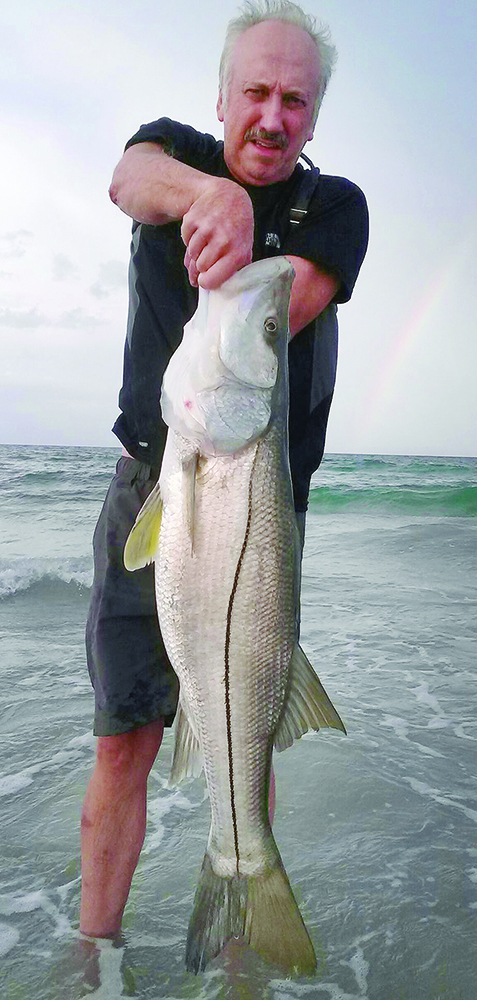
In the summer and fall, the fishing on the beach heats up. Tarpon regularly patrol the shallow ocean shoreline looking for schools of greenies and mullet. The tarpon may be there at any time, even in the heat of the day. Large topwater lures, jerkbaits, and CAL jigs all work for these line-busters. Unless you have heavy gear, chances are a big tarpon will spool you. Since I use light line, any big tarpon would need to be broken off. If you use heavier tackle, it’s harder to cast. These are the tradeoffs of beach fishing.
In mid-summer, snook leave the inlets and cruise the shoreline looking for an easy meal. For best results, fish the first hour of sunlight or the last two hours of the day. During these low-light hours, snook will be around the first cut (closest breaking wave) and will sometimes run up into the foam chasing bait on the shore. Cast at an angle to keep your lure near the first breakers where the fish are. Try a 3/8- to ½-ounce CAL jig with 4-inch paddletail. I like a slow steady retrieve so I can feel the lure and any strikes. Topwaters, spoons, and jerkbaits all get results.
Jacks prowl the beach in summer and fall, too, and schools of them can be seen chasing bait on the shorelines. Jacks are very aggressive and will hit any lure. You’ll also catch the occasional mackerel and bluefish. In the fall, during the mullet run, it’s not uncommon to catch 30 bluefish in a couple hours. When your line gets cut, it’s usually one of these sharp-toothed predators.
Beach fishing is like any fishing; you have to find the bait. Drive to a beach access, and get out to scan the beach. If there is no bait and no birds, get back in your car and try another location. Sometimes a spot just a mile away will have lots of bait.
Tides are important, too. Some of the best spots, like Herman’s access north of Stuart, are almost unfishable at low tide. There’s a sandbar, and the bigger fish won’t usually cross it at low tide. You might need to go south to Tiger Shores, where the water’s deeper. Don’t go fishing right before the slack tide. At the beach, I like first incoming, but all that matters is that the tide is moving.
Where to Go: Get on A1A, there are dozens of beach accesses from Bathtub Beach (Inlet) in South Stuart to Fort Pierce (Inlet).
Tackle: I use 6- to 12-pound test braided line, with 2 to 3 feet of 25-pound fluorocarbon leader on a spinning reel. Bring extra leaders and lures.
The Stuart Rod & Reel Club meets at 7 p.m. on the second Thursday of each month. For information, call 336-414-3440.